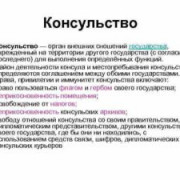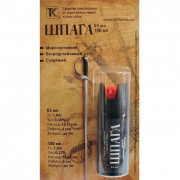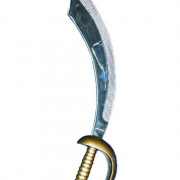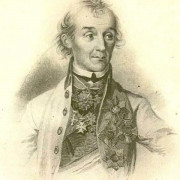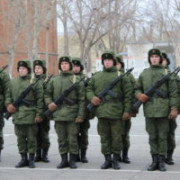Нож гитлерюгенда
Содержание:
INTERNET PURCHASES
DO’S
- Start collecting by purchasing from certified dealers who are reputable and honest.
- Attempt to use an online payment service that allow charge-backs. Paypal allows you to charge-back the seller in the case of non-receipt. A MO is only slightly safer than sending cash
- Ask for an inspection period.
- Check feedback from other auctions, if questionable, check with the other party to see if the issue was resolved, but keep in mind that there are always transactions that go bad, even for the best of sellers.
- Proceed very cautiously if you get offers to purchase «outside the auction site».
- Ask for more pictures
- Search the collector forums with the seller’s name, often problem sellers have a history.
- Post on the collector forums if you have questions. Other collectors are your best source of info (polite questions from beginners are always answered).
- Ask a collector moderator to help you out if you run into transactional problems. Never underestimate the power of these forums.
- Ask for a respected person to inspect the item or act as an escrow agent for large transactions if you are not sure (Be sure to pay them for their services).
- Treat your seller respectfully and honestly. Relationships are required to build a truly great collection.
DON’TS
- Bid on «Private Auctions» -often it’s the seller who’s hiding something.
- Jump on a ridiculously low «Buy it Now» price. -Look before you leap.
- Purchase from former east block countries. Save yourself a lot of heartache. If you, do insist on an escrow service!
- Don’t pretend you know it all, there are few absolutes in our hobby and even seasoned collectors are occasionally surprised.
Ok, I’m ready to buy a Hitler Youth Knife!
SCABBARD
This is the first place I look. All Hitler Youth scabbards are made of formed magnetic sheetmetal, no other material was used during the period. All these scabbards are magnetic. If you run across a nonmagnetic scabbard keep running! The biggest red flag when looking at these scabbards is to look for a lip on the throat. These lips are never present on originals and one of the very few absolutes that I know of when discussing reproductions. Original pieces show a rivet to the obverse side approximately 8 mm down from the throat opening. This rivet stands proud above the rest of the scabbard body and as a result, almost always exhibit paint loss. Scabbards were made in basically two shapes. The first has a round nose tip or snout and the second, a more pointed tip. Both of these types were used during the period and despite my best efforts I have never been able to correlate a given type to any one manufacture. My best guess is that there were a few different scabbard suppliers who on a contract by contract basis, provided scabbard blanks to different manufactures. These scabbards were assembled with one or two spring metal liners in order to keep the blade secure during wear. These springs were held in place by a rivet on each side. The first rivet I have already mentioned and the second rivet went through the hanger leather, the scabbard rear and finally secure the back liner in place. One little trick that the fakers have not picked up on yet is that many of these liners were covered with a coarse cotton. Liners without this cotton are often seen on original examples, however, I have never seen a repro with this cotton so it’s a good sign of an original. Look at the leather hanger and keep in mind that these knives are seventy years old and as such, should display some natural wear and age. Smell the leather, 70 year old leather does not smell. If the leather smells new, question it. Look at the snap button. Often originals display interesting patterns, does it look used?
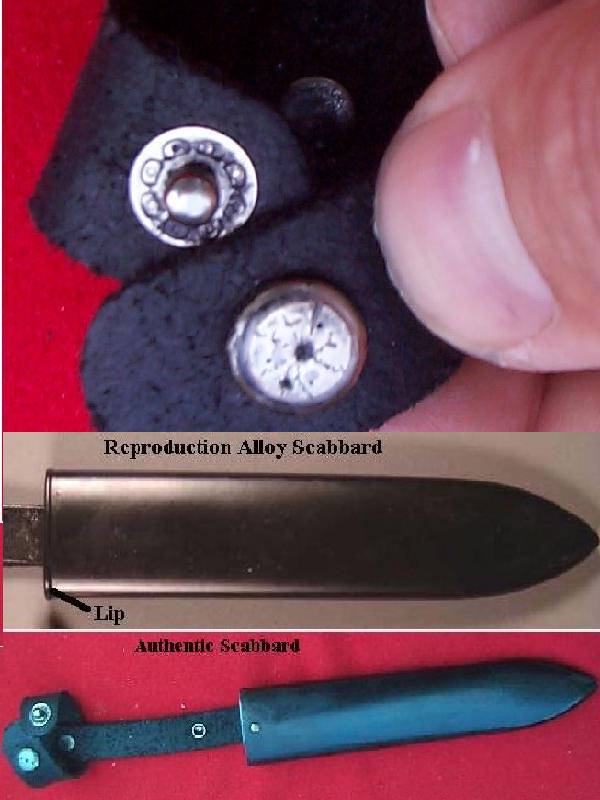
HILT:

When looking at a HJ hilt the first thing I look for is wear. Keep in mind these guys proudly wore their knives to all meetings. As a result, normal wear is seen on most of these pieces. The first place I look for wear is on the upper part of the hilt where the hanger strap rested on the pommel. Most original HJ’s will show some wear and platting loss in this area. You just can’t fake this normal wear. Look at the general shape of the hilt. Although the angle of the finger guard may vary by manufacturer, all these knives generally look right. I look for casting seams. Period knives were finished with typical fussy German care. Finding casting seams particularly around the finger guard is usually not seen on originals.
Grip Plates:
These grip plates were made of an black bakelite. This bakelite was cast in a checker pattern running approximately 45 degrees from the crossguards. There was generally some hand fitting involved in manufacturing. Far more than we are use to seeing today in our mass production world. These grip plates should follow the contours of the hilt and generally be fit well without rattling around.
Rivets:
Grip plates were secured to the hilt using brass, steel nickel plated or aluminum rivets. These rivets are what hold the whole knife together. They run through the grip plates, hilt and blade. Look for smooth dressed heads. The top of the heads may well display period wear as they sit proud of the grip. To the reverse these heads should be smooth and well rounded. The reverse of these rivets were peened over keeping the rivet in place. Despite this, the reverse rivet should appear relatively smooth and free from small individual taps. A rough un-professional finish to the reverse of these rivets are a clue that the knife may have been disassembled at some point often to it’s determent.
HJ Diamond:
The obverse plate had a cut out and inlaid with a HJ diamond. In my experience, the cutout in the grip plate generally does not follow the 45 degree pattern in the grip plate. These diamond inlays were quite involved. They were pinned from the reverse into the hilt. They were made in 2 sizes. The earlier ones were the smaller measuring approx 23mmx13mm and the later RZM ones slightly larger at approx 25mmx15mm. Over time they generally loosened ever so slightly. Take the knife in your hand and reflect light off the diamond into your eyes and with your nail ever so gently put a bit of pressure on one corner of the diamond. You should see some movement, ever so slightly. Although some diamonds will not move most originals will. Look at the diamond itself, all the colors should be precisely separated. The red should display a translucent fish scale pattern. This pattern is actually made up of small dots. In most cases, you will see this fish scale pattern. Consider a solid red unpatterned area a red flag. At the other two obtuse corners of the diamond is solid white enamel. Centered is a black swastika on a gold background. This gold background is actually flecked or has a slightly sparkled look when observed under an eye-loop. When observed very closely, coming out from this gold background are tiny lines running to the edges, separating the different color sections. Outlining the entire diamond inlay is a copper colored border (approximately 1 mm) in width. Often the copper has aged to a black. Finally over the entire surface is an enamel coating giving the whole diamond a uniformed smooth look. Often this enamel will be damaged from time and wear. A nice diamond is always sought after and adds value to the knife.
Lastly, have an RZM code that you would like to determine the manufacturer? Here’s a list of manufacturers sorted by RZM code.
In summary here is a quick checklist of clues to authenticity:
GOOD:
- Honest even wear
- Magnetic scabbard with rivet to the front
- Cotton liner covers
- Loose HJ diamonds
- Fish scale red enamel
- Flecked gold swastika background
BAD
- RZM designation on the obverse, (normally found to reverse) riccasso
- Casting seams on the hilt
- Poorly fit grip plates
- New smelling leather
- Alloy non-magnetic scabbards
- Minty factory fresh
- Banged up poorly formed rivets
- «Germany» anywhere on the knife or scabbard
- Motto with no makers name
- Motto with RZM Blades dated 1939 and later
- Solid red on the diamonds
Разновидности
Учитывая, что нож часто носился участниками Гитлерюгенда как знак отличия, то логично, что зависимо от возраста и полномочий членов организации снабжали разными моделями орудия. Выделяют три вида ножей Гитлерюгенда.
Нож для младших участников Гитлерюгенда
Младших участников организации, в возрасте 10-14 лет снабжали ножами HJ RZM Fahrtenmesser, которые являли собой уменьшенную модель, длина которой достигала 20 см. Конструкция была такой же, как и в прототипе. Рукоять была выполнена из алюминия и состояла из двух частей, которые соединялись заклепками.

Нож младших участников Гитлерюгенда (без надписи на клинке).
При этом на них не было надписи на клинке. Ножны были такими же, как и в остальных моделях оружия. На них была свастика, нанесенная на красно-белые ромбы. Крепились они так же, как и ножи Гитлерюгенда.
Командирский кортик Гитлерюгенда
Ножи для командиров были введены в 1937 году, и предназначались для руководителей.
Рукоять командирских кортиков изготавливали из дерева и обтягивали серебристыми нитями, на которых присутствовала символика Гитлерюгенда. Для производства металлических деталей использовали алюминий высокого качества, который внешне напоминал серебро. Крестовина была орнаментной, имели небольшой изгиб в обратном от острия направлении.

Командирский кортик «Гитлерюгенд».
Клинок таких моделей оружия был узким, довольно длинным с двусторонней заточкой. Внешне они больше напоминали стилеты. Встречались модели с наличием девиза на лезвии и без него. Ножны делали из металла и покрывали кожей с рельефным изображением орлов. Длина кортика для офицера составляла 34 сантиметров.
Ножи студенческой лиги
Ножи студенческой лиги того времени были копиями ножа Гитлерюгенда. Учитывая, что в организацию набирали студентов вузов и колледжей Германии, была произведена замена символики Третьего Рейха на знак студенческой лиги. А также нож отличался крупными свастиками и вытянутой формой.
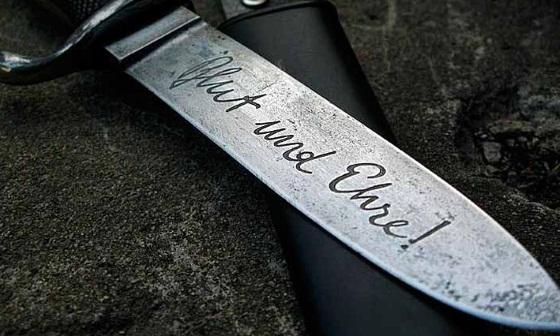
Клинок студенческой лиги «Гитлерюгенд».
Такой нож имел длину около 24 см, подвесы являли собой ремни с петлями и заклепками, которые крепились к ножнам. Нож Гитлерюгенда пользовался спросом не только в соответственных подразделениях, но и других организациях. На качество орудия обычно влияло качество поставок снаряжения.
Мечта коллекционера
В период с 1933 по 1942 год было выпущено около 15 миллионов ножей. Несмотря на такую значительную на первый взгляд цифру, нож HJ (немецкое сокращение названия организации) является желанным приобретением для коллекционеров. Особенно ценятся экземпляры с изображением свастики. Связано это с тем, что после разгрома Германии нацистская символика стала массово удаляться из общедоступного обихода. Ее заменило изображение стилизованной лилии (так называемой «лилии Бурбонов») – эмблемы возрождаемого скаутского движения. Рукояти ножей стали изготавливаться из пластмассы, тогда как первые модели, выдаваемые членам гитлерюгенда, имели деревянно-каучуковую рукоять. Кроме скаутов, эти ножи взяли на вооружение войска Бундесвера — и это вполне логично, ведь изготавливались они на тех же заводах и оборудовании, что и в Третьем рейхе. Но позже отказались от него в пользу штык-ножей.
Автор статьи:
Суворов Роман
С 2000 года работаю в журналистике. Специализация — событийная и криминально-правовая тематики. Увлекаюсь холодным оружием и всем, что с ним связано (история, изготовление).
Оружие или почетный атрибут?
И с первых шагов мы натыкаемся на другую неточность, допущенную в заголовке. Созданный в 1933 году нож трудно однозначно отнести к холодному оружию. Гораздо больше он напоминает оружие хозяйственного быта или туристический нож. Судите сами: односторонняя заточка, отсутствие крестовины (она заменена упором для пальца) и скругленное острие – таким ножом вряд ли удобно поражать противника. Правда, со временем форма ножа изменилась, став более «хищной» после соответствующей заточки скосов — но все равно нож долгое время считался церемониальным: его вручали членам гитлерюгенда по прохождении ими испытаний как знак отличия. Правда, его можно было купить в любом магазине, торгующем обмундированием и экипировкой. А вот носить нож следовало исключительно слева на поясе или портупее. И не абы как, а строго вертикально и чтобы была видна эмблема организации – красно-белый ромб со свастикой на рукояти. Что-либо менять в конструкции ножа или крепления строжайше запрещалось. Равно как и добавлять на лезвие или ножны посторонние надписи или клейма.
Hitler Youth Knife Basics Sell my HJ Knife

I have decided to write this article because Hitler Youth, (HJ) knives commonly are the first and most affordable way to start collecting German Edged Weapons. Millions of these were produced between 1933 and wars end. Today they remain relatively affordable and as a result, are often the first dagger purchased by a beginner. During this period, scores of producers, somewhere around 150, were awarded contracts to produce this knife and as a result, there are many variants out there. Hitler Youth knives are widely reproduced and they are a minefield for experienced collectors and even more so for the beginner. The best advice I can give the beginning collector is to buy their first knife from a trusted source preferably a certified dealer who offers a lifetime warranty as to authenticity and an inspection period. This is a very small investment in the hobby. The most common mistake I see is a newbie buying his first dagger from an auction site or at a gun show trying to save a few bucks. I don’t know how many times I have seen new collectors throw in the towel after getting taken on their first purchase! Experienced collectors buy from dealers that alone should say something! When holding a known original in your hand many of things I am going to speak about here will come clear. There are very few absolutes when collecting German edged weapons and even fewer when one starts talking about HJ’s. This article will provide a list of clues helping you determine authenticity. Please keep in mind they are only clues and one has to look at the entire piece to determine authenticity. Do not write off a piece when you come across the first questionable feature. I do not claim it to be 100% complete, and I have not seen it all, however this should provide enough information to help beginners avoid the most common pitfalls.

Determining the Period of Manufacture
There are 3 basic configurations for these knives depending on the period of production. Generally speaking Transitionals are considered the most desirable and the late period RZM’s the least. Listed below are characteristics that will help one determine the period of manufacture.
Early Period 1933-1936:
- Thin Blades
- Steel Hilt
- Low or No Ricasso
- Maker Marked
- Motto
Transitional Period 1936-1940
- Thicker Blades
- Higher Ricasso
- Motto with Maker Mark and RZM designation
- Motto with RZM designation
- No Motto with Maker Mark and RZM designation
Late Period 1938-1942
- Thicker Blades
- Higher Ricasso
- RZM designation (or not — later)
- No Motto
Overall Appearance:
The first thing I look for when purchasing an HJ is uniform, normal, period wear to the whole piece. Mint daggers that look like they just came out to the factory yesterday, more often than not, did! There is no better advice I can give you than to start by collecting knives that have honest wear. This just can’t be faked. 99.9% of originals display normal wear to the hilt plating, an aged look to the leather, scratches to the scabbard and wear to the blade. When I say uniform I mean that you should not see a mint scabbard and a beat up knife. All components should display relatively the same amount of wear. We need to keep in mind that these knives are 70+ years old and were handled by kids! They were used and abused! Remember your Scout knife…. Sticking with these pieces to start with will save you much heartache.
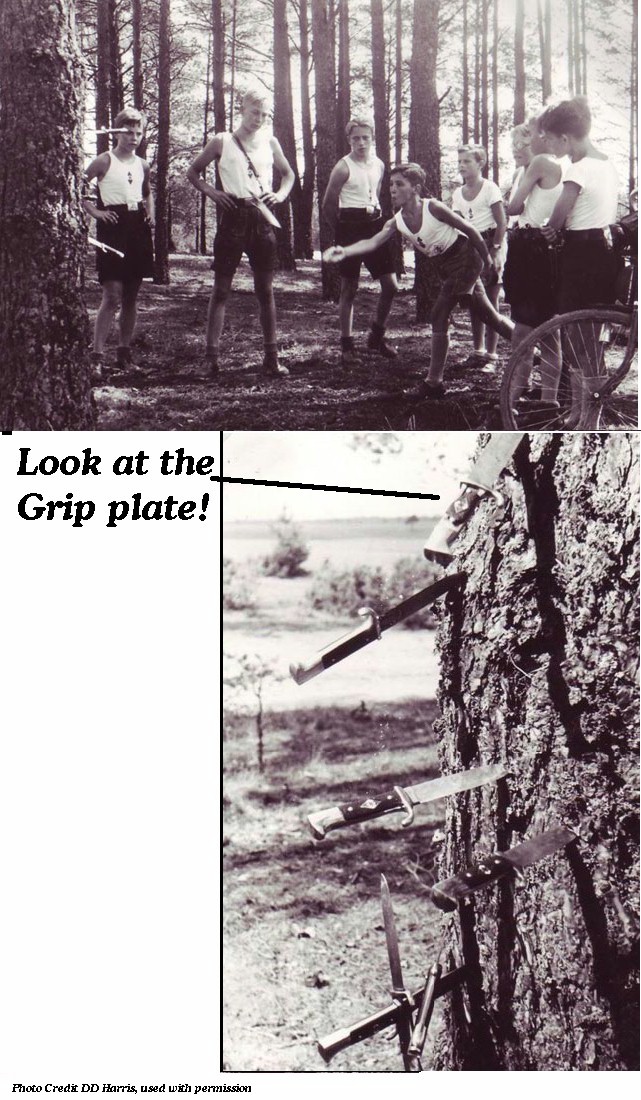
Что было написано на ноже?
Как и большинство ножей гитлеровской Германии, нож гитлерюгенда имел на лезвии вытравленный девиз «Кровь и Честь» (нем. «Blut und Ehre»). Тот же девиз был выгравирован и на пряжках форменных ремней. В современном мире использование этого девиза как относящегося к нацистской символике и идеологии считается преступлением. Это вполне оправданно, поскольку это словосочетание имеет самое прямое отношение к истокам нацизма — Нюрнбергским расовым законам 1935 года, официально называвшимися впоследствии Законом «О защите германской крови и германской чести».
Кстати, интересно то, что английский писатель Фредерик Форсайт в романе «Досье «ОДЕССА» ошибочно помещает этот девиз на эсэсовский кортик. Были и другие надписи на клинках – в честь памятных событий. Например, нож с надписью «Adolf Hitler – marsch» выдавался участникам похода к месту заключения фюрера. Кроме того, на таких клинках ставился год, в котором его обладатель принимал участие в походе. Позже от нанесения текста на клинки отказались — вероятно, для упрощения производства. На лезвии остались лишь клейма фирм-производителей. Зато некоторые ножи получили пилу на обухе. Таких образцов в настоящее время сохранилось очень мало, поэтому на форумах, посвященных холодному оружию, часто можно прочитать споры на предмет того, применялась ли эта пила по прямому назначению или же играла роль шоковых зубьев.

BLADE
A wide assortment of blades were used and many variants exist. From 1933 to about 1936, before RZM began standardization manufacturing of these blades varied widely. The one feature seen that is a big red flag is the word «Germany» written anywhere on the blade. «Germany» was never written anywhere on any pre-1945 HJ knife or any other German dress dagger. Look at the basic blade shape, does the shape look the same as a known original? Is it sharpened? Does it look aged? Most repros look minty. Fakers usually don’t go to the trouble of sharpening their blades. At least, not as roughly as a 10 year old would have in the 30’s! Graying, clouding, and pitting take time and again, are not generally seen on fakes. A fingerprint stain can take 25 years to appear. Some knives were produced without a ricasso. This is not a sign of a reproduction. During this early period all knives were inscribed with the motto «Blut und Ehre!», transcribed Blood and honor. This inscription was etched not stamped. If you take your nail, not your finger, and run it along the inscription you should be able to feel the etch. Turn the blade over and the maker mark is usually marked approximately one quarter of the way up the blade from the crossguard. This generally states the makers name, logo, and location. In my experience, all blades with a motto will also have a stamped makers name and logo to the reverse. There may or may not be an RZM designation on the blade. After 1938, HJ production became more standardized as RZM influenced more control. All blades became uniform in shape with a ricasso. The motto no longer was applied to the obverse blade and all blades should exhibit an RZM stamp or etch, most often seen on the ricasso. All these blades were issued with a rather thick (approximately 2 to 3 mm) leather buffer pads seated against the crossguard.
Гитлерюгенд -дело не добровольное
Во-первых, гитлерюгенд – не совсем скаутская организация. Скорее, она ближе к пионерскому движению советских времен. Членство в ней было обязательным для всех немцев в возрасте от 10 до 18 лет, тогда как вступление в скауты в большинстве стран – дело добровольное. Затем следует сказать, что по достижении восемнадцати лет юноши отправлялись служить в войска вермахта или СС. То есть гитлерюгенд изначально был кузницей кадров для армии. Опять же – налицо явное сходство с пионерией с ее знаменитой игрой «Зарница». Впрочем, совпадений и различий при желании можно найти множество. Например, у пионеров не было ритуального ножа, а у скаутов и в гитлерюгенде он был. О нем и поговорим.
